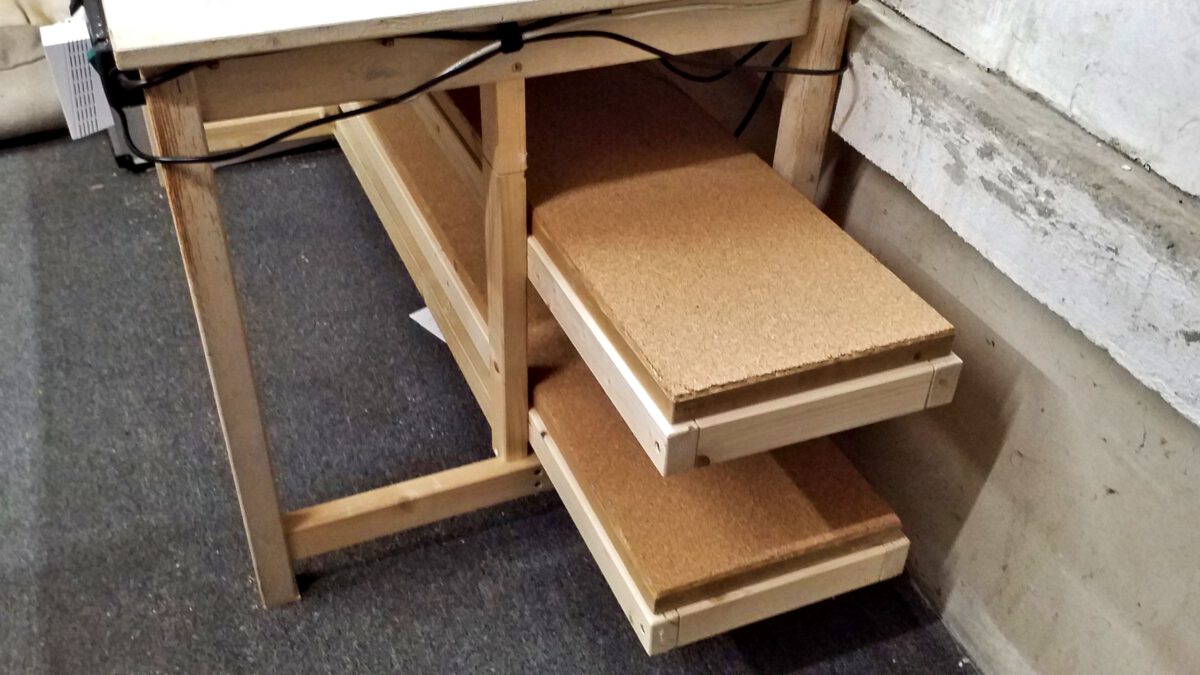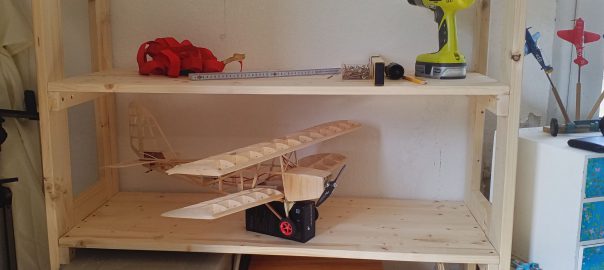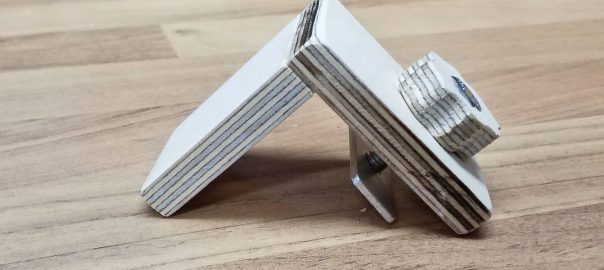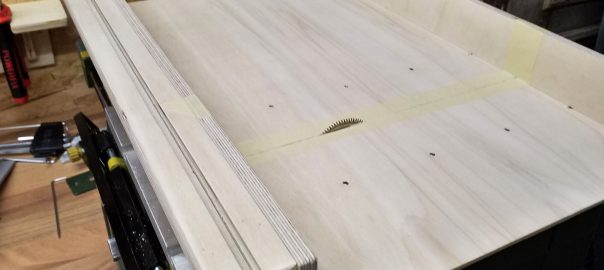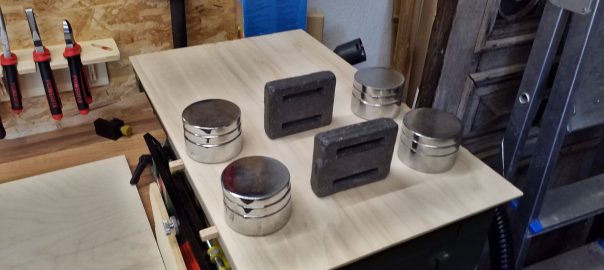In order to build the Thermy 4 I will need building boards, which are in widespread use with model aircraft builders. They serve two purposes: First they are supposed to provide an absolutely even surface because most workbenches sag over time, which means one can’t build really straight wings or fuselages on top of them. It’s easy to check it out at home, simply put a spirit level on top of the workbench and look for the gap in the middle, which one almost always will find. Second, building boards facilitate storing subassemblies while one is continuing to work at other parts. And since my workbench is frequently needed for other purposes than the current project, one doesn’t want it to be cluttered with, say, a clamped half of a fuselage.
Tag: Workshop
Workshop: New Storage Shelf
Due to well-known reasons I’ve been in home office for a couple of weeks. And since mixing private life and work is downright unhealthy, some office space had to be found in the workshop. That was the trigger to finally create some more storage area.
The most importent requirement which has to be met is a full metre of board-width in order to store raw materiels for modeling. Additionally, the lowest compartment is supposed to accomodate two pedestals which really come in handy while working but tend to be in the way in the meantime.
Workshop: Boring Table for the Drill Stand
Model making constantly requires drilling holes that are perpendicular to the work piece’s plane. To bore at right angles by eyesight doesn’t sound too difficult, but one has to observe two right angles at the same time and that tends to be a tad difficult with just two eyes.
Salvation comes in the shape of a drill press, or for those to be short a bob or two, a drill stand which guides the power drill. Alas, most of the latter don’t have a boring table, so bigger work pieces tend to wobble and one can’t fixate them either. And just maybe one would like to use a gauge or stop in order to facilitate repeated drilling?
Workshop: Finishing the Cross Cut Sled and Accessories
The cross cut sled is assembled, but not precisely adjusted, yet. This calls for patience and precise work, as I’ve learned from painful experience. In total, I needed six attempts until I was satisfied with the results. However, I am now!
Via Michael Truppe’s video channel “Let’s Bastel” I learned about the fice-cut-test. This was apparently invented by William Ng, who demonstrates and elaborates on the underlying principles it in a youtube video. Truppe summarizes it in german.
Workshop: Fences for the Cross Cut Sled
The easy part was constructing the sled bottom. Now it’s getting straight at the nitty-gritties, namely construction the fences and attaching them.
The front fence needs to be as level as possible, so it can’t just be cut from a single piece of board. Almost any board has some kind of warp which is simply inacceptable for a precise fence. Thus, the front fence has to be comprised of a cornered construction that is self-centering.
Workshop: Cross Cut Sled for the Miniature Table Saw
As I mentioned in the construction report, I made a mistake while building the vertical stabilizer for my biplane, namely not chafing the trailing edge. Attempting to correct this using the transverse stop thoroughly failed. In order not to have to repeat this experience, I’m building a cross cut sled for the circular table saw.
However, a cross cut sled is capable of many more things. For once it facilitates to repeatively cut slats to length, thus one can skimp on a mitre saw. And then one can use it to get small boards back to right angles which were cut crookedly, so they can be rip cut again. So today is about the first part of a mini project which will facilitate my other handicraft.

